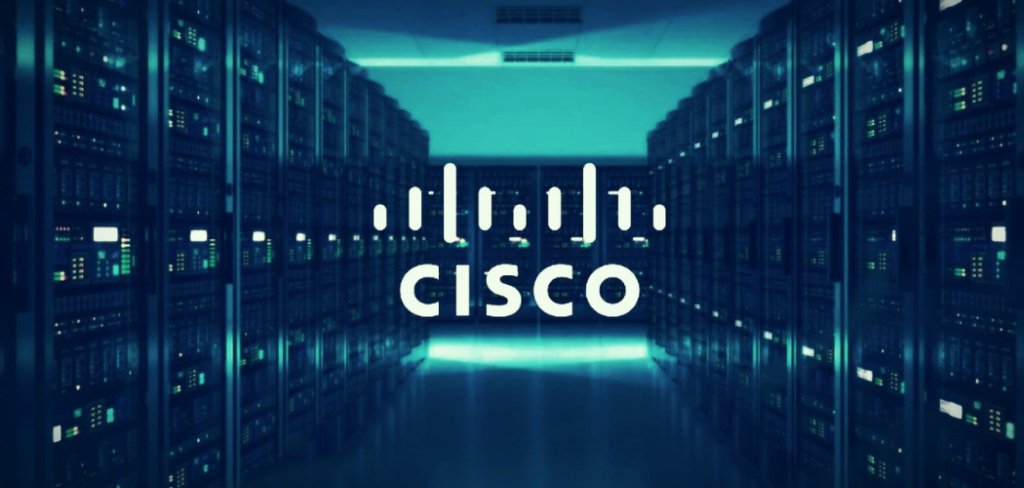Cisco, the big networking company, is getting ready to make some big changes that could affect a lot of its employees. They’re following the lead of many other tech companies who are trying to save money and change how they do business. Cisco wants to keep up with what customers want by concentrating more on areas that are growing fast, like software stuff, especially cybersecurity.
Cisco, the big networking company based in San Jose, California, is getting ready to shake things up with a major overhaul of how it does business. This could mean big changes for many of its employees. The company, which is one of the giants in the tech world and had around 84,900 employees worldwide as of last year, hasn’t given specific details about how many jobs might be affected.
Strategies for Dealing with Looming Uncertainty
The upcoming announcement, set to be made around Cisco’s earnings call on February 14, comes after a previous restructuring back in November 2022. During that time, Cisco revealed that about 5% of its employees were impacted, resulting in around $600 million being spent on severance and other related costs.
Cisco’s move to reorganize and reduce its workforce reflects a broader pattern seen across the tech industry. Many big players like Amazon, Alphabet, and Microsoft have also been making cuts as they try to save money and reshape their operations.

Strategies for Surviving a Wider Industry Slowdown
The decision by the networking giant to reduce its workforce reflects a larger trend in the industry, influenced by various challenges such as supply chain disruptions and reduced demand following the pandemic. Research from GlobalData shows that many companies globally have been announcing job cuts as job postings continue to decline.
Cisco’s focus on high-growth areas like software, particularly cybersecurity, shows their commitment to meeting the changing demands of the market. This strategic shift is aimed at helping the company stay competitive and relevant in the evolving landscape.
Tools for Navigating the Future Successfully
In the midst of an uncertain future for the tech industry, companies like Cisco are reevaluating their game plans and making some tough calls. This restructuring isn’t just about pinching pennies; it’s about molding the company to tackle the challenges of a swiftly shifting market.
The news of this restructuring is bound to make waves across the tech scene. As Cisco gears up to navigate this new terrain, everyone’s curious about how the networking giant will chart its course through choppy waters.
In the fast-paced world of technology, one thing remains crystal clear: innovation and adaptability are key. With Cisco teetering on the edge of significant transformation, the whole world is holding its breath, eager to see what’s next for this tech powerhouse.

Cisco’s Motific SaaS Simplifies Generative AI Implementation
Today, Cisco unveiled Motific, a new software-as-a-service (SaaS) solution designed to simplify and expedite the deployment of generative AI for businesses.
Motific was born out of Outshift, Cisco’s innovation hub dedicated to exploring emerging technologies and developing innovative solutions. It offers a comprehensive view of the entire generative AI lifecycle, from initial assessment to full-scale production. This empowers IT and security teams to confidently integrate generative AI capabilities throughout their organizations, while maintaining control over critical factors such as data security, responsible AI practices, and costs.
This launch represents Cisco’s inaugural foray into the realm of generative AI deployment solutions, and the timing couldn’t be more opportune. Businesses across various industries are increasingly optimistic about the potential of generative AI and are incorporating the technology into both internal operations and customer-facing applications. Recent data from Workato reveals a staggering 400% growth in the adoption of generative AI across business processes in 2023, with revenue operations and IT departments leading the charge in implementation efforts.
How Cisco Motific Empowers Enterprise Evolution
Although generative AI offers various business advantages such as enhanced productivity and profitability, it also presents challenges related to trust. This is because the technology can be prone to biases and inaccuracies, potentially leading to trust issues.
To mitigate these risks, companies need to take proactive measures. This includes hiring skilled professionals who can select and tailor the most suitable model for the intended purpose. Additionally, they must ensure that the AI system is built using high-quality and up-to-date data. Once deployed, continuous monitoring of the system’s performance in real-world scenarios is essential to identify and address any unexpected outcomes or deviations from expected behavior.

NYC Hosts the AI Impact Tour
Join us in New York on February 29, where we’re teaming up with Microsoft for an exclusive event discussing the balancing act between the risks and rewards of AI applications. Secure your invitation to this special gathering below.
Implementing AI initiatives can often be a significant investment in both time and resources. However, Cisco’s latest solution, Motific, aims to streamline this process by providing teams with an all-encompassing platform designed to guide them through every step of the generative AI journey.
With Motific, setting up AI applications becomes a breeze. Through just a few simple clicks, the product automatically configures assistants, abstracted APIs, and Retrieval Augmented Generation (RAG) using pertinent data sources and models. According to Cisco, this streamlined approach can slash the deployment time of AI applications from months down to mere days.
Crucially, Motific doesn’t just expedite the process; it also incorporates essential controls to ensure accuracy, security, and cost-effectiveness. These controls include compliance measures to prevent over-usage and overspending, integration capabilities with organization-specific data sources, and built-in policy controls to handle sensitive data.
Furthermore, Motific addresses potential security vulnerabilities and reliability concerns associated with AI applications, such as prompt injection and toxicity risks. Teams can either utilize these controls as they are or customize them according to their internal policies, ensuring the system effectively identifies and mitigates issues between user inputs and model responses.
Once the AI model is deployed, Motific continues to provide invaluable support. It tracks business processes, offering insights into prompt usage, ROI, and cost analysis. Additionally, it furnishes teams with consolidated monitoring, audit trails, and key metrics, empowering them to establish budgets and prevent unauthorized AI usage.
According to Vijoy Pandey, senior vice president for Outshift, “Motific accelerates the time to value an enterprise organization spends on gen AI usage and deployment by mitigating the risk up-front and enabling teams to innovate faster.”
Launching by June 2024
While Motific shows great promise, particularly for companies seeking to harness the potential of generative AI without the need for a dedicated team to handle secure deployments, its real-world performance remains to be seen. Cisco has announced that the software will be showcased at Cisco Live EMEAR and will be available for general use by June 2024.
Vijoy Pandey, discussing the accessibility of Motific, stated, “IT teams can start using Motific by visiting the library on Outshift’s website… Prospective customers can get a sneak peek of Motific during Cisco Live Amsterdam, with more details to follow in June 2024. Pricing will also be disclosed upon general availability.” Early adopters of Motific have reportedly provided highly positive feedback, expressing enthusiasm for its solution-oriented approach to accelerating generative AI adoption and its flexibility across various vendors and models.
However, it’s worth noting that Motific isn’t the only player in this field. The surge in generative AI, which is projected to contribute up to $4.4 trillion in global corporate profits annually, has spurred the emergence of several toolsets focused on ensuring accurate development and operation of generative AI applications. Other companies, such as Arize, Datadog, and Google-backed Context, offer their own solutions, each with unique approaches.
Pandey contends that Motific stands out by leveraging Cisco’s extensive data resources and top-notch end-to-end security. “Cisco provides the foundational infrastructure necessary for AI, from robust network capabilities to stringent security measures,” he explained. “As the generative AI landscape continues to evolve, customers can rely on Motific to address compliance requirements crucial for maintaining competitiveness in the industry.”
Cisco AI Readiness Index Indicates Gaps
According to the inaugural Cisco AI Readiness Index, a staggering 97% of senior business leaders have felt mounting pressure over the past six months to adopt AI-powered technologies. Much of this urgency is coming from the highest levels of management, including the Board of Directors. However, despite the eagerness to embrace AI, a significant 86% of companies find themselves ill-prepared to fully leverage its capabilities.
Shubha Pant, Vice President of AI/ML at Outshift by Cisco, identifies the sudden accessibility of generative AI as a primary challenge for companies. This democratization of AI has exposed gaps in talent, knowledge, and computing resources, significantly hindering the realization of AI’s potential transformative impact.
“Previously, AI was mainly confined to specialized teams and products within organizations,” Pant explains. “But with the rise of generative AI, this dynamic has shifted dramatically. Now, new tools and techniques are emerging daily, accessible to anyone within the organization to enhance productivity and create innovative experiences. The opportunities are boundless, creating an exciting environment for growth.”
Despite this potential, many leaders are still grappling with the implications of this shift for their businesses. They are striving to comprehend how AI will reshape their operations, strategies, and overall business landscape.
“It’s not just about incorporating AI into our systems,” Pant emphasizes. “It’s about cultivating a culture that embraces AI readiness – one where every member of the organization feels empowered to utilize these tools effectively. That’s where the real transformation happens.”
Implications of the Cisco AI Readiness Index
Pant emphasizes the importance for leaders to keep up with the fast-paced evolution of AI. “AI is a powerful tool, but it’s essential for leaders to effectively harness its potential,” she says.
However, recent research from Cisco sheds light on a significant gap between the rapid advancements in AI and organizations’ readiness to embrace them. The Index, based on a survey of over 8,000 companies worldwide, reveals glaring deficiencies across various aspects of business infrastructure. Alarmingly, half of the respondents express serious concerns about the potential business ramifications if they don’t take action within the next year.
Although 95% of respondents claim to have a well-defined AI strategy, the survey uncovers deficiencies in critical areas. For instance, 41% lack clearly defined metrics for gauging the impact of their AI initiatives, while only 45% have a sustainable long-term funding plan in place.
The Index delves into AI readiness across six pivotal pillars: Strategy, Infrastructure, Data, Governance, Talent, and Culture. It also categorizes organizations’ readiness into four levels: Pacesetters (fully prepared), Chasers (moderately prepared), Followers (limited preparedness), and Laggards (unprepared).
Pant provides insights into the Cisco Readiness Index, spotlighting the most pressing vulnerabilities and essential strategies crucial for organizations to succeed in adopting AI, both in the present and as the technology continues to evolve rapidly.
The Influence of Talent and Culture
Generative AI isn’t about replacing human intelligence; it’s about enhancing it. By democratizing innovation, it opens doors to new possibilities across businesses. However, without wholehearted support from organizational leaders, it risks becoming a costly experiment that falls short of its potential. Given its complexity, successful integration into an organization requires human expertise and oversight.
Currently, only 29% of respondents feel adequately resourced, with nearly half considering themselves moderately well-equipped. However, 24% feel under-resourced or unsure, primarily due to the challenge of finding qualified AI professionals in the job market.
Despite this, a significant 72% believe their employees possess the necessary skills to use AI tools effectively in their daily tasks. However, there’s recognition that these skills may not be sufficient to fully capitalize on advanced AI practices. Consequently, 90% are investing in employee training to bridge this gap. This investment not only benefits the business but also boosts morale among employees concerned about job displacement due to AI advancements.
Yet, there’s a notable disparity in AI receptiveness between leadership, middle management, and frontline employees facing substantial changes in their roles. “It’s crucial to cultivate a culture where everyone, regardless of their role, can adapt, learn, and leverage new AI tools,” emphasizes Pant. Achieving this requires concerted efforts from both top management and grassroots levels. This entails hiring experts to impart knowledge and providing ongoing training and learning opportunities to keep pace with the rapid evolution of AI technology.
Strategies to Turn Vision into Action
In the Strategy category, around one-third of business leaders were identified as Pacesetters, marking the highest number among all six pillars. These companies stand out because their management teams and boards are heavily invested in crafting a roadmap for AI success.
These high scores are attributed to their well-defined deployment strategies, clear ownership structures, robust impact measurement processes, and consistent funding streams. Remarkably, many of these organizations have already begun implementing AI initiatives across various departments, notably in infrastructure and cybersecurity.
However, what’s particularly noteworthy is the significant emphasis placed on strategy in these findings, according to Pant. While having impressive strategies is a positive step, it’s crucial for them to be backed by substantial investments.
“My hope is that this emphasis on strategy will translate into tangible investments, rather than just being empty talk – a genuine commitment to AI with strong top-down reinforcement,” she explains. “As we look ahead, I believe a significant portion of next year’s budgets should be earmarked for AI initiatives. While having impressive strategies is a great start, they must be supported by real investments. It will be intriguing to see if the current focus on strategy will result in the development of tangible products in the coming year.”
Opportunities within the New Infrastructure Challenge
With the advent of powerful new technologies comes the need for equally robust infrastructure. This encompasses high-performance CPUs and GPUs for enhanced processing, specialized AI software platforms, automation tools, high-bandwidth ethernet, efficient data storage and management solutions, and bolstered cybersecurity measures.
The study reveals that 95% of respondents recognize the looming challenge of handling complex workloads on their IT horizon. However, it’s important to understand that this isn’t just a wishlist for tomorrow; it’s the pressing reality of today. In the short term, the focus should be on raising awareness, deepening understanding, and laying a solid foundation.
“While immediate business value may not be readily apparent, it’s crucial to lay the groundwork for long-term success,” explains Pant. “This entails investing in both people and infrastructure, which are essential for ensuring sustainability over time. This includes building capacity, scalability, fostering a culture of continuous learning, and establishing robust governance structures – all critical elements for effectively leveraging generative AI at scale.”
The Critical Importance of Data and Governance
Once you’ve established your infrastructure, the next crucial step is managing the vast amount of data within your organization. This involves understanding how data flows, identifying existing governance tools and technologies, and ensuring that the right data is available for addressing specific business needs.
“Talent plays a significant role in providing expertise and oversight, but organizations must also prioritize the creation of high-quality, diverse, and reliable data,” emphasizes Pant. “This data serves as the foundation for AI initiatives and must be relevant, trustworthy, and easily accessible. Additionally, organizations can gradually build up their data resources, addressing specific use cases as they integrate AI into their operations.”
Unfortunately, the study reveals that very few companies have implemented central data management policies and robust data curation processes. Shockingly, 81% of respondents report encountering data silos within their organizations. This fragmentation poses a significant challenge, compounded by the need for data cleaning, quality assurance, security measures, regulatory compliance, and specialized processing skills.
Moreover, many organizations are grappling with the evolving landscape of data governance and regulatory frameworks as AI transitions from deterministic to generative models. With no established standards in place, and given the rapid pace of advancement in generative AI, achieving consensus on universal guidelines will require time and concerted effort.
Leaping into Generative AI Technology
It’s essential for ambition to align with readiness; 61% of respondents acknowledge they have a year or less to implement their AI strategy before facing significant negative business consequences from lagging behind. However, there’s hope in the form of six critical AI readiness pillars, which serve as a roadmap for organizations aiming to transition from AI Laggards to Pacesetters, regardless of their size. The key is to maintain focus on the long-term goal and prepare for the journey ahead.
Organizations must prioritize immediate concerns such as infrastructure, talent acquisition, and pilot projects. “Certainly, organizations must address immediate priorities like infrastructure, talent, and pilot projects,” notes Pant. “However, it’s equally crucial to keep long-term objectives in mind and think big. A strategic plan grounded in reality, yet flexible enough to adapt to technological advancements, ensures a company’s ability to seize emerging opportunities.”
